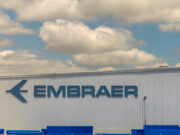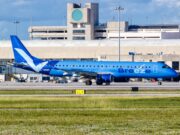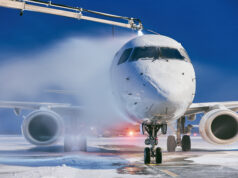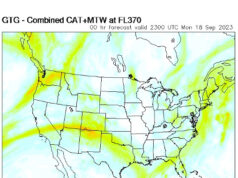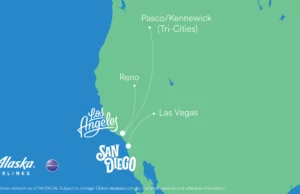Holdover time (HOT) helps pilots determine the temporal effectiveness of the deicing procedure across a wide range of temperatures and precipitation intensities. Often, colder temperatures with intense precipitation (especially rain or freezing rain) reduce the overall time available for a pilot to initiate takeoff after the deicing procedure is completed. A decision to continue takeoff after the recommended HOT period has elapsed may be unsafe and irresponsible.
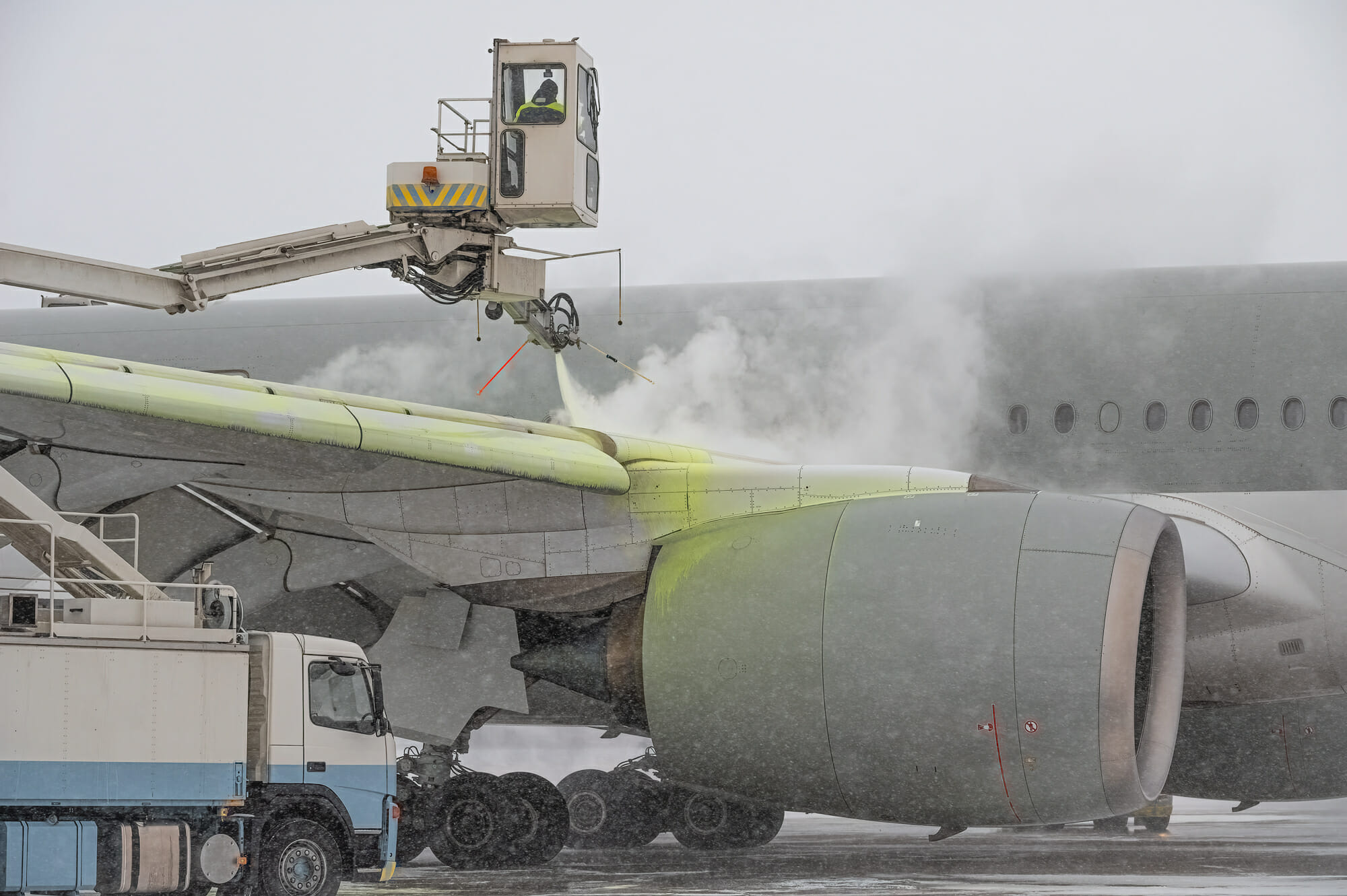
The science behind deicing fluids
De-icing and anti-icing fluids are essentially freezing point depressants. Glycol when mixed with water at various concentrations in order to obtain a suitable de-icing/anti-icing fluid reduces the freezing point of water and thus encourages the melting of solid precipitation (e.g., frost, ice, snow, etc.) from the aircraft surfaces. Corrosion inhibitors, wetting agents, and a dye are also added to these fluids to protect the aircraft surface, prevent the fluid from running off the aircraft surface and to visually identify the type of de-icing fluid. The type and application of de-icing fluids used on an aircraft should carefully follow the manufacturer’s recommendations and procedures to prevent any unintentional aerodynamic impact or degradation of the aircraft structure.
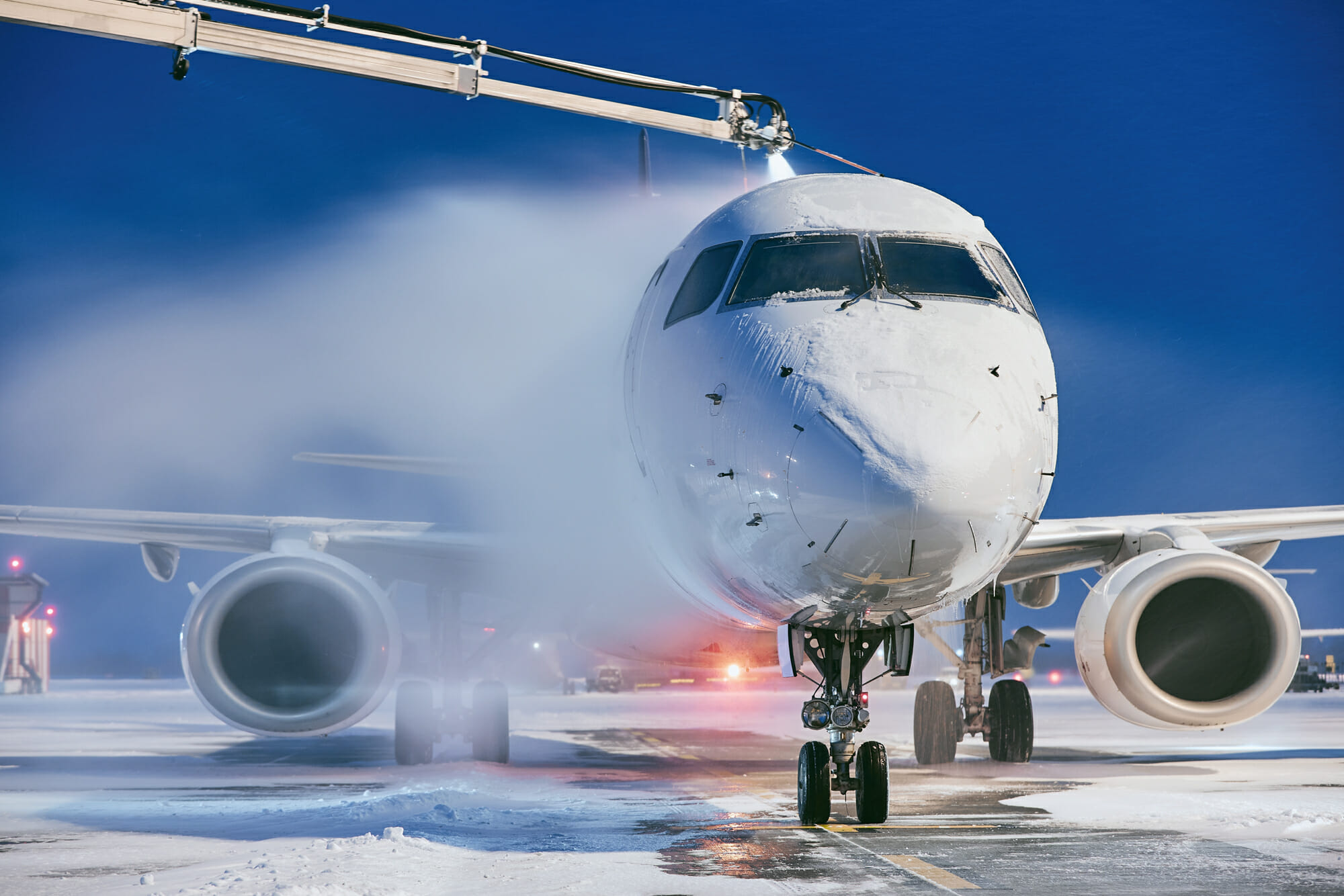
Types of deicing fluids
· Type I fluid is dyed red or orange and may be applied on any aircraft. Any contamination will blow-off the aircraft surface even during low-speed (approximately 60 kts) takeoff. Type I fluid is characterized by low HOT.
· For Type II and Type IV fluids, thickening agents are added to increase viscosity. Therefore, the tendency for the fluid to run off the aircraft surface is reduced and thus provides added protection. However, higher rotation speeds are required to blow the fluid from the aircraft. These fluids are typically clear and dyed green, respectively.
· Type III fluid is dyed yellow and is characterized by properties between Type I and Type II/IV. The HOT is longer when compared to Type I, but the fluid is designed to shear off the aircraft surfaced at a lower rotation speed (less then 100 kts).

Pilots should thoroughly inspect the flight control surfaces during pre-flight inspection if the aircraft has been de-iced. Type II and IV fluids have a tendency to rehydrate to a jelly-like consistency and freeze at colder temperatures between the gaps of the flight control surfaces. This phenomenon has been associated with locking of the flight control surfaces (including ailerons and elevators) and has resulted in many flight crews declaring an emergency and performing a precautionary landing.
Complacency kills! Disregarding HOT, improper de-icing procedures, and hasty preflight inspections have resulted in numerous incidents and fatal accidents. Flight crews should exercise caution when operating in known icing conditions and err on the side of safety. Having an aircraft towed out of a heated hanger only minutes prior to takeoff, delaying departure to allow the weather to pass (especially mixed precipitation, freezing rain or freezing drizzle), or turning around for a second application of di-icing fluid when approaching the HOT limits could ultimately save your life and those of your passengers.
Reference
A Pilot's Guide to Ground Icing Module III – Fluid Basics (aircrafticing.grc.nasa.gov)















